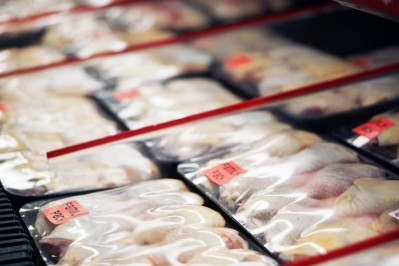ForFarmers enters Polish feed market

The Dutch feed group said that as well as increasing its foothold regionally, giving it a fifth country of operation, the move also strengthens its poultry portfolio.
The deal, which is subject to standard approvals by the local competition authorities, is in line with its long stated goal to grow both organically and through acquisitions in Europe and surrounding regions, said ForFarmers. Poland's above average growth rate in poultry production particularly appealed, it added.
At the close of the transaction, expected in around three months’ time, the Dutch company said it would make a first payment of PLN 234m ($69m at current exchange rates) in cash to obtain 60% of the shares.
The agreement also includes the possibility of it obtaining the outstanding shares, over time. However, a spokesperson for ForFarmers would not disclose the specified targets in relation to future operational results at the Polish firm that would determine the Dutch group taking on the remaining shares of Tasomix, though it did mention, in its announcement about the deal, the performance of a new feed mill in Pionki as a factor.
Leading Polish player
Currently ranked at number four in the Polish feed market, Tasomix has 180 employees. In 2016, it reported sales of 395k tons of feed, generating revenue of PLN 429m and a normalized EBITDA of about PLN 34m.
ForFarmers said it plans to fully consolidate the Tasomix results, but that it would run the company as a joint venture, cross leveraging the strengths of both companies. “Tasomix is expected to contribute to the 2018 earnings per share.”
The Polish company will become part its cluster - Germany, Belgium and Poland - managed by Adrie van der Ven, COO, but will continue operating under the Tasomix brand.
Tasomix production infrastructure
The two, currently operational, Tasomix mills are located in Biskupice Oloboczne, some 250 km south-west of Warsaw and in Myslibórz, around 200 km west of Warsaw. Their joint capacity is 450k tons with output mainly targeted at poultry farmers, but also serving the ruminant and pig farmer segments.
The Polish company is, however, also in the process of building a feed production plant in Pionki, 100 km south of Warsaw. That third milling operation is set to have a maximum capacity of 350k tons, and is scheduled to be on stream later this year. It will manufacture feed for a dedicated poultry integrator linked to the owners of Tasomix, said ForFarmers.
“A supply agreement has been put in place with this integrator. The mill will also serve non-integrated poultry farmers and pig farmers.”
Polish poultry sector
In recent years, Poland has become the largest broiler producing country in Europe, servicing the local market and exporting to mostly EU countries.
The Polish poultry industry is highly integrated and export oriented, according to a US Department of Agriculture (USDA) GAIN report published in December last year.
Polish poultry meat production consists mainly of chicken broilers (85%) and turkey (14%), both of which are used by the domestic meat processing industry. Duck and goose meats are produced on a smaller scale and are exported mainly to Germany and other countries in Western Europe, it said.
That USDA publication predicted that 2018 Polish poultry meat production would grow by 2% over 2017. The anticipated slower growth rate in 2018 is due to expected lower domestic prices for poultry meat and declining export demand, said the US agency.
However, it said, despite that more moderate growth forecast, Poland would remain the EU’s largest poultry meat producer.
Although most Polish poultry meat exports are shipped internally within the EU, Poland’s government and industry bodies are actively seeking new markets, including the US, wrote the USDA authors.
In 2016, some 30% of Poland’s poultry meat production was destined for export, according to that US report. Major markets within the EU are the UK, Germany, France, the Netherlands, and the Czech Republic. Hong Kong, China, and Ukraine are the main markets outside of the EU.
Polish egg production in 2016 reached 597,000 MT, about 2% higher over 2015, noted those US market experts. Production growth was driven by cheaper feed costs and higher exports. The shortage of eggs in other parts of Europe, caused by 2017 Fipronil contamination and HPAI outbreaks, is serving the Polish sector, with the USDA seeing further growth for it this year.








